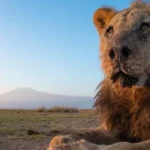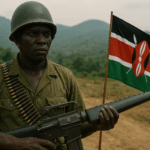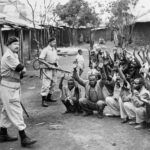Uislamu uliathiri sana jamii za Afrika Magharibi kuanzia takriban karne ya 8 na kuendelea, ukitengeneza mitandao ya biashara, utawala, elimu, na utamaduni. Kwa karne nyingi, iliingia katika eneo hilo hatua kwa hatua kupitia biashara ya ng'ambo ya Sahara, kufikia katikati mwa miji, miji ya biashara, na mahakama za kifalme kwa nyakati na viwango tofauti. Kuenea kwake hakukuwa na usawa: katika baadhi ya sera, kupitishwa kwa mahakama kulitangulia kuchukuliwa na watu wengi zaidi, wakati maeneo ya vijijini mara nyingi yalihifadhi desturi za kidini za kiasili pamoja na Uislamu.
Makala hii inashughulikia nini: vituo muhimu vya kujifunzia, utamaduni wa maandishi, mazoea ya elimu, watu wakuu wa kihistoria, na changamoto za kuunda upya historia kutoka kwa vyanzo vingi.
Kuenea kwa Mapema na Muktadha wa Kikanda
Uislamu uliingia Afrika Magharibi hatua kwa hatua kuanzia takriban karne ya 8 na kuendelea, hasa katika njia za biashara za ng'ambo ya Sahara. Wafanyabiashara wa Afrika Kaskazini walileta dhahabu, chumvi, nguo, na mafundisho ya Kiislamu. Kupitia mitandao ya kibiashara, mawazo ya kidini, elimu ya sheria, na ujuzi wa kusoma na kuandika ulienea pamoja na biashara.
- Watawala na wasomi: Mataifa tofauti yaliyojihusisha na Uislamu kwa nyakati na daraja tofauti; katika sera nyingi, kupitishwa kwa mahakama kulitangulia kuchukuliwa kwa mapana zaidi. Katika siasa za Ghana, kwa mfano, Uislamu ulionekana zaidi katika vituo vya biashara na mahakamani, wakati jumuiya nyingi za ndani zilihifadhi mifumo ya kidini ya kiasili.
- Vituo vya mijini: Mali, Songhai, na falme ndogo zilikuza vituo vya usomi, biashara, na maisha ya kidini, zikichanganya desturi za Kiislamu na za kienyeji katika viwango tofauti. Baadhi ya watawala, kama vile Mansa Musa wa Mali, walikuza Uislamu katika ngazi ya mahakama, wakifadhili misikiti na wanazuoni.Ushahidi: Historia za Kiarabu, akaunti za wasafiri, mabaki ya kiakiolojia, na historia simulizi kila moja hutoa maarifa huku ikiwa na vikwazo. Masimulizi ya kisasa, kama vile safari za Ibn Battuta za karne ya 14, hutoa maelezo mengi lakini yanahitaji usomaji makini wa muktadha.
Timbuktu: Kitovu cha Wasomi Afrika
Timbuktu, yenye makazi katika karne ya 12 karibu na mkondo wa Niger, ilipata umaarufu chini ya Mali katika karne ya 14 na kufikia kilele cha umaarufu wa kitaaluma wakati wa karne ya 15-16 chini ya udhamini wa Songhai.
- Taasisi: Jiji lilikuwa mwenyeji wa misikiti, madrasa, na duru za masomo ya kibinafsi, kuwezesha mafundisho ya masomo ya Kurani, sheria (fiqh), teolojia, historia, unajimu, dawa, na ushairi. Ufundishaji mara nyingi ulichanganya mihadhara ya msikitini na uanafunzi chini ya wasomi mashuhuri.
- Maktaba na maandishi: Maktaba za Timbuktu na mikusanyo ya kibinafsi ilihifadhi nakala za maelfu; miradi ya kuorodhesha na kuweka kidijitali inaendelea kuboresha makadirio. Nakala za Ajami—lugha za kienyeji za Kiafrika zilizoandikwa kwa hati ya Kiarabu— zinaonyesha jinsi ujuzi wa kusoma na kuandika wa Kiislamu ulivyozoea lugha za kieneo na hadhira.
- Wasomi mashuhuri: Ahmed Baba (1556–1627), mwanasheria na mwanahistoria, ni mtu mkuu katika urithi wa kiakili wa Timbuktu. Alifukuzwa kwa muda mfupi baada ya ushindi wa Morocco (mapema karne ya 17) lakini aliendelea kuandika sana, akiacha kazi ambazo bado zinarejelewa hadi leo.
Vyanzo vya msingi: Ripoti za wasafiri, historia za mahali hapo, na historia simulizi huangazia Timbuktu kama kituo mahiri cha mafunzo na biashara huku ikionyesha upendeleo na mapungufu ya waangalizi wa nje.
Vituo Vingine Muhimu vya Kujifunza
- Gao: Kama mji mkuu wa Songhai, Gao ilisaidia wasomi, wasimamizi wa mahakama na maktaba, kuunganisha biashara za kikanda na mitandao ya elimu.• Djenné: Maarufu kwa Msikiti wake Mkuu, Djenné iliandaa madrasa na mikusanyiko ya maandishi. Mpangilio wa miji wa Djenné na nafasi za umma ziliwezesha mijadala ya kielimu na mwingiliano wa kijamii, na hivyo kuchangia utamaduni bainifu wa kiakili. Miji hii ilikuwa zaidi ya vitovu vya kidini: yalikuwa vituo vya kibiashara, kitamaduni na kisiasa ambapo wasomi, wafanyabiashara na watawala walitangamana. Uchavushaji huo mtambuka ulikuza maendeleo ya ujuzi maalumu katika sheria, dawa, unajimu, na fasihi.
Tofauti za Kidini na Usawazishaji
Uislamu katika Afrika Magharibi haukuwa sawa na mgumu. Wasomi wa mijini na vituo vya biashara mara nyingi vilikubali mila ya Kiislamu kwanza, wakati wakazi wa vijijini walidumisha imani za kiasili. Mazoea ya ulinganifu yaliibuka, yakichanganya mila ya Kiislamu na desturi za mahali, sherehe na mila za kiroho. Wasomi wa kidini wakati mwingine walipatanisha kati ya itikadi za Kiislamu na matarajio ya wenyeji, na kusababisha aina za kipekee za usemi wa imani.
Miundo ya Kielimu
Elimu katika Afrika Magharibi haikuwa sare. Maelekezo yalitokea katika madarasa yaliyo katikati ya misikiti, duru za masomo ya kibinafsi, na programu za mafunzo. Wanafunzi walijifunza moja kwa moja kutoka kwa wasomi, maandishi ya kukariri, na kushiriki katika mijadala na mazoezi ya kutatua matatizo. Mfumo huu ulisisitiza umilisi wa maandishi, usomaji wa mdomo, na ushauri badala ya mifano rasmi ya mihadhara inayojulikana katika vyuo vikuu vya Ulaya.
- Mtaala: Masomo ya kisheria (fiqh) yalikuwa ya msingi, lakini mitaala pia ilijumuisha teolojia, dawa, astronomia, hisabati, ushairi, na historia.
- Lugha na maandishi: Maandishi yalitolewa katika Kiarabu cha Kawaida na Ajami, yakionyesha kupitishwa kwa elimu ya Kiislamu na kuzoea kwake lugha za wenyeji.Utamaduni wa maandishi
Utamaduni wa maandishi wa Timbuktu unajulikana kwa upana na kina chake.
Picha ya Muswada
- Nyenzo: Karatasi na ngozi
- Lugha/hati: Kiarabu cha Kawaida na Ajami
- Mada: Sheria (fiqh), teolojia, historia, elimu ya nyota, dawa, ushairi
- Masuala ya uhifadhi: Joto, unyevu, uporaji uliopita, na mtawanyiko; uwekaji dijitali wa kisasa na ulezi wa ndani ni muhimu katika uhifadhi
Utunzaji uligawiwa: familia, wasomi, na misikiti iliratibu makusanyo katika vizazi. Umiliki mara nyingi ulipitisha mistari ya jamaa, ambayo iliunda mazoea ya kuhifadhi na usambazaji wa maarifa.
1591 Ushindi wa Morocco
Uingiliaji kati wa Morocco ulivuruga miundo ya kisiasa ya Songhai, ukabadilisha uhuru wa kisiasa wa Timbuktu, na kusambaza miswada kwa walinzi wapya. Baada ya 1591 hati fulani ziliondolewa au kuhamishwa, na nyingine zikasambazwa kwa walinzi wapya; bado familia nyingi na maktaba za misikiti zilihifadhi makusanyo. Wasomi wanajadili ukubwa wa mtawanyiko na upotevu, na miradi ya kisasa ya kuorodhesha na kuweka dijiti imekuwa muhimu kwa kufuatilia asili na uhifadhi.
Ratiba ya Matukio Muhimu
- Karne ya 8-10: Biashara ya awali ya Sahara
- Karne ya 11-13: Mabadiliko ya Ghana-Mali
- Karne ya 13 kuendelea: Upanuzi wa taasisi za Kiislamu chini ya Mali• Karne ya 14: Mali kilele; Timbuktu inapata umaarufu
- Karne ya 15-16: Kipindi cha Songhai, umri wa dhahabu wa Timbuktu
- 1591: Uvamizi wa Morocco na mzunguko wa maandishi
Ramani na Visual
Vielelezo vinavyopendekezwa kwa uchapishaji wa wavuti:
- Ramani: Njia za Trans-Sahara, vituo vya Ghana/Mali/Songhai, Timbuktu/Gao/Djenné
- Picha ya shujaa: Msikiti wa Sankoré, Timbuktu - alt: "Msikiti wa Sankoré, Timbuktu, Mali - mtazamo wa mto na minaret"
- Picha za ndani: Msikiti Mkuu wa Djenné, maandishi ya karibu (pamoja na tarehe, mkusanyiko, na manukuu ya muktadha)
Jinsi Tulivyoangalia Makala Hii
- Vyanzo: Historia za Kiarabu, akaunti za wasafiri, ripoti za kiakiolojia, miradi ya kuorodhesha, udhamini uliopitiwa na rika
- Uthibitishaji wa maandishi: Mipango ya hivi karibuni ya uwekaji dijiti na ripoti za COI; ambapo makadirio yanatofautiana, mjadala wa kitaalamu unabainishwa
Marejeleo (Yanapendekezwa)
- Levtzion, N., & Hopkins, JFP (wahariri). Corpus of Early Kiarabu Vyanzo kwa Afrika Magharibi Historia, Chuo Kikuu cha Cambridge Press
- Hunwick, JO, Timbuktu na Dola ya Songhay, Brill
- Mradi wa Hati za Timbuktu / mipango ya kuorodhesha ya Aluka
- Conrad, D., Levtzion, N., makala za awali kuhusu Uislamu katika Afrika Magharibi
- Nakala za hivi majuzi za jarida kuhusu uingiliaji kati wa Morocco wa 1591
Machapisho yanayohusiana
-
Simba Pori Lookiito, 'Mojawapo ya Kongwe Zaidi Duniani,' Aliyeuawa Kenya
Simba dume mwitu, anayeaminika kuwa mmoja wapo wakubwa zaidi duniani, amewahi...
-
Wakenya nchini Vietnam: Wapiganaji Waliosahaulika na Mashahidi wa Vita
Wakati vita vya Vietnam vinajadiliwa katika madarasa, maandishi au riwaya majina yanayoibuka…
-
Maasi ya Mau Mau – Sura ya Umwagaji damu katika Historia ya Kenya
Machafuko ya Mau Mau yalianza mwaka wa 1952 kama majibu ya ukosefu wa usawa na ukosefu wa haki katika…


